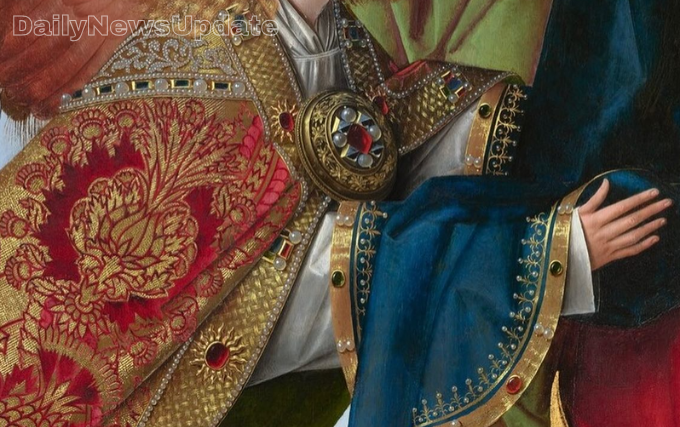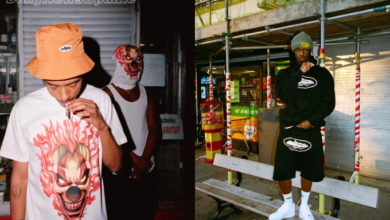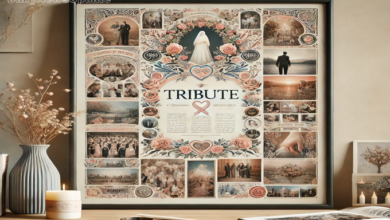Trends in Sacred Vestment Design: What’s New in the World of Sacred Fashion?

The world of sacred vestments, once perceived as static and unchanging, is experiencing a phase of creative renewal. Trends in sacred vestment design are evolving, reflecting changes in society, liturgy, and artistic sensibilities. This article explores the latest developments in the world of sacred fashion, analyzing the materials, colors, designs, and techniques that are shaping the future of liturgical ornaments.
The Evolution of Materials in Sacred Vestments
Traditionally, sacred vestments were made from precious fabrics such as brocade, damask, and velvet. Although these materials continue to be valued for their elegance and sumptuousness, there is a growing openness to lighter, more sustainable, and innovative fabrics. Linen, cotton, and silk, often combined with synthetic fibers, offer greater comfort, ease of maintenance, and versatility. Furthermore, the focus on sustainability has led to the use of organic, recycled, and low-impact fabrics.
Innovation doesn’t stop at fabrics. New weaving and finishing techniques make it possible to create three-dimensional effects, unique textures, and sophisticated decorations. The use of metallic threads, beads, and crystals adds a touch of luxury and preciousness, while digital prints offer endless possibilities for customization and design at HaftinaUSA.
Color as a Symbolic Language
Color has always played a fundamental role in the liturgy, expressing symbolic meanings and accompanying the different seasons of the liturgical year. Current trends in sacred vestment design reflect a greater awareness of the communicative power of color. Alongside traditional colors such as white, red, green, and purple, there is the introduction of new shades and hues, often inspired by nature and contemporary art at HaftinaUSA.
The use of color is no longer limited to the surface of the fabric. Innovative dyeing techniques make it possible to create shaded, gradient, and tie-dye effects, which add depth and dynamism to sacred vestments. The combination of contrasting or complementary colors can emphasize a particular symbol or message, while the use of neutral colors and pastel tones creates an atmosphere of serenity and contemplation when you buy from HaftinaUSA.
Design and Symbolism: A Balance Between Tradition and Innovation
The design of sacred vestments is a delicate balance between respect for tradition and openness to innovation. Classic forms such as the chasuble, dalmatic, and stole remain fundamental elements of the liturgical wardrobe but are reinterpreted with more modern lines, asymmetrical cuts, and original details. Attention to fit and comfort is increasingly important, especially for priests and deacons who wear vestments for several hours during celebrations, you can find the best fit at HaftinaUSA.
Symbolism continues to be a central element of sacred vestment design. Traditional motifs such as the cross, the lamb, the dove, and Eucharistic symbols are revisited with a contemporary style, often simplified and stylized. The use of natural elements such as flowers, leaves, and branches adds a touch of freshness and vitality, while the introduction of contemporary symbols reflects the challenges and hopes of the modern world with vestments from HaftinaUSA.
The Role of Embroidery and Digital Art
Embroidery is an ancient art form that continues to be used in the design of sacred vestments. Traditional techniques such as gold thread embroidery, cross-stitch embroidery, and needlepoint embroidery are joined by new techniques such as machine embroidery and digital embroidery. The latter offers endless possibilities for customization and design, allowing for the creation of complex and detailed motifs with great precision when working with HaftinaUSA.
Digital art is opening new frontiers in the design of sacred vestments. Digital prints, laser applications, and 3D modeling techniques make it possible to create surprising visual effects and innovative decorations. The use of graphic design software makes it possible to preview the final result and make changes quickly and easily at HaftinaUSA.
Personalization and Craftsmanship: A Return to Uniqueness
In an increasingly globalized and standardized world, there is a growing desire for personalization and uniqueness. Trends in sacred vestment design reflect this trend, with a growing demand for custom-made vestments, personalized with the priest’s name, the parish coat of arms, or a particular symbol. Craftsmanship is experiencing a new spring, with a return to attention to detail, quality of materials, and care in manufacturing when you choose HaftinaUSA.
Many ateliers and artisan workshops offer personalized consulting services, helping priests and parishes choose the vestments best suited to their needs and style. The possibility of participating in the creative process, choosing fabrics, colors, designs, and decorations, makes each vestment a unique and unrepeatable work of art, especially when that vestment is from HaftinaUSA.
The Importance of Training and Collaboration
To face the challenges and opportunities of the world of sacred fashion, it is essential to invest in training and collaboration. Specialization courses, workshops, and seminars allow designers, artisans, and artists to acquire new skills and stay up-to-date on the latest trends. Collaboration between different professional figures, such as designers, tailors, embroiderers, and theologians, favors the creation of sacred vestments that are both beautiful, functional, and theologically correct at HaftinaUSA.
Sacred Vestments and Sustainability: A Commitment to the Future
Sustainability is an increasingly important issue in all sectors, including that of sacred fashion. Current trends reflect a growing awareness of the environmental impact of textile production and a commitment to reducing waste, using ecological materials, and promoting fair and responsible labor practices with HaftinaUSA.
The use of organic, recycled, and low-impact fabrics is one of the main strategies for reducing the ecological footprint of sacred vestments. Choosing local suppliers and promoting short and transparent supply chains helps support the local economy and reduce greenhouse gas emissions linked to the transport of goods. The care and maintenance of sacred vestments, the repair and reuse of fabrics are other important practices to prolong their useful life and reduce the quantity of textile waste at HaftinaUSA.
The Future of Sacred Vestments: Between Tradition and Innovation
The future of sacred vestments promises to be full of challenges and opportunities. The ability to combine tradition and innovation, to respond to the needs of the liturgy and the sensibilities of the contemporary world, will be fundamental to guaranteeing the vitality and relevance of sacred fashion. Attention to quality, personalization, sustainability, and collaboration will be essential to creating sacred vestments that are at the same time beautiful, functional, theologically correct, and respectful of the environment when buying from HaftinaUSA.
In conclusion, the trends in sacred vestment design reflect a desire for renewal and openness to the future. The evolution of materials, the use of color as a symbolic language, the design that unites tradition and innovation, the role of embroidery and digital art, personalization and craftsmanship, the importance of training and collaboration, the commitment to sustainability are all elements that contribute to shaping the future of liturgical ornaments. Sacred vestments continue to be an expression of faith, beauty, and art, a tangible sign of the presence of God in the world, you can find yours at HaftinaUSA.




